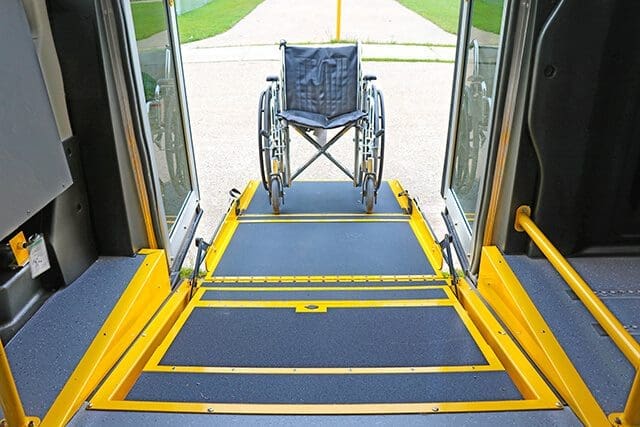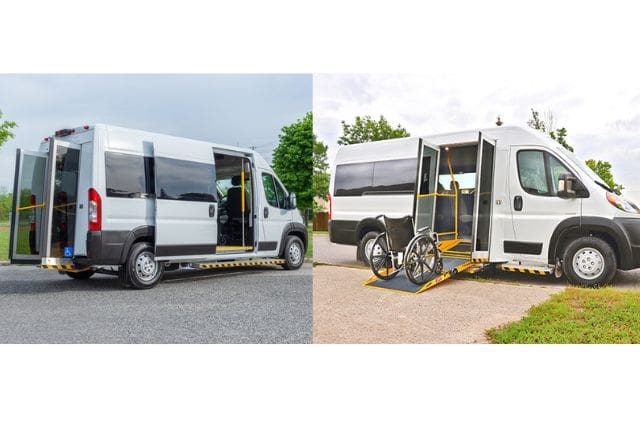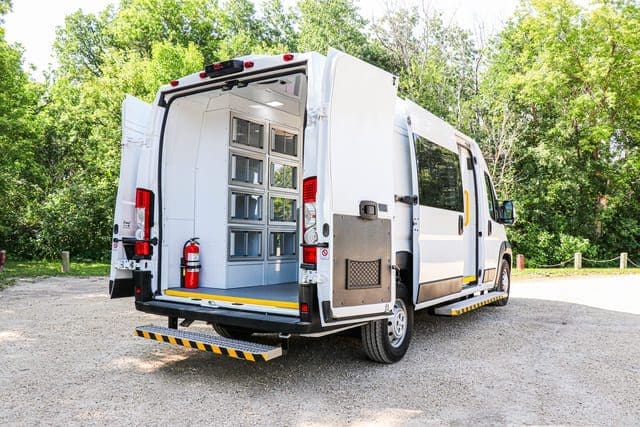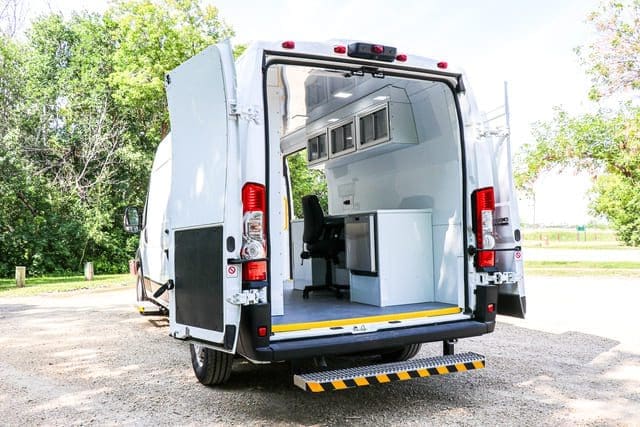Have you ever found yourself wondering whether your organization really needs an accessible van? You might be asking, “Can’t a regular van do the job?” If you’re on the fence, it’s likely because you’re not 100% sure of the differences or the risks of choosing the wrong option.
This uncertainty is completely normal. You’re likely thinking about budgets, long-term use, and, most importantly, the people who will rely on your vehicle. Going with the wrong choice could lead to frustrated passengers, unsafe transportation, or even limiting access to your services. No one wants that.
At AVAN Mobility, we’ve been helping organizations like yours find the right accessible vans for over 10 years. We understand the importance of creating vehicles that break down barriers, making transportation and healthcare easier for everyone. While we’re confident in our ability to provide innovative solutions, we know we’re not the only option out there. So, it’s important for us to guide you without bias, helping you make the best decision for your needs.
In this article, we’ll walk you through the key differences between a regular van and an accessible van. You’ll learn how accessible vans can provide safer, more comfortable transportation for people with disabilities and why they might be the right fit for your organization.
What’s the difference between a regular van and an accessible van?
There are a couple of differences between regular passenger vans and accessible vans that you should know about. Let’s take a closer look.
Accessible vans: These are designed to make life easier for people with mobility challenges. They have features like ramps or lifts, so someone using a wheelchair or walker can get in and out without needing help. There’s also more space inside, so passengers can move around comfortably, and the vans are equipped with securement systems to secure wheelchairs during the ride.

Regular vans: These are built for people who can walk and don’t need extra help getting in or out of the vehicle. They don’t have ramps or lifts, and the doors aren’t wide enough for mobility devices. This can make it hard or even dangerous for someone with limited mobility to enter, exit, or move around.
Here’s a quick breakdown of the key features of accessible vans:
- Entry and exit: Accessible vans have ramps or lifts, regular vans don’t.
- Inclusive design: Accessible vans are built for everyone, including those with mobility challenges.
- Comfortable ride: There’s more room inside for wheelchairs or other mobility aids.
So, if your passengers have mobility needs, an accessible van is the better choice. It ensures their comfort and safety, while a regular van just won’t meet those needs.
When does investing in an accessible van make sense?
If your organization transports people who use wheelchairs or have trouble getting around, an accessible van could be a great investment. It can help many different businesses and programs.
Here are some examples:
Adult day programs: If you run a program for seniors or people with disabilities, an accessible van makes it easier to transport them safely. Without one, getting someone in and out of a regular van can be unsafe and uncomfortable.
Assisted living facilities: Residents often need transportation for doctor’s visits or social outings. With an accessible van, you give them a safer, more dignified way to travel. Families will also appreciate knowing their loved ones are comfortable and cared for.
Community organizations: Even small programs like local nonprofits or churches may need to transport people with mobility challenges. Whether it’s for an event, appointment, or group outing, having an accessible van makes everything smoother and more inclusive.
Non-emergency medical transportation: Accessible vans also provide people with mobility challenges rides to medical appointments. They allow patients to travel comfortably without needing to worry about how they’ll get in or out of the vehicle.
Key takeaway: Accessible vans make sure that no one is left out. They help people travel safely, whether it’s to a medical appointment or a fun outing, giving them a better experience from start to finish.
When is a regular passenger van the better choice?
A regular passenger van is a great option if your organization mainly transports people who don’t have any mobility challenges. These vans are designed for passengers who don’t need special help getting in or out. A regular passenger van might be a better fit if you’re just transporting people who can walk without assistance.
Here are some examples of when a regular van makes sense:
School groups: If you’re transporting students to and from events or activities, a regular van can easily handle this.
Sports teams: For teams heading to games or practices, a regular van is an efficient way to get everyone there.
Corporate outings: If your organization frequently shuttles employees to meetings or events, a standard van works well for able-bodied passengers.
How does the cost compare between an accessible van and a regular van?

The cost difference between an accessible van and a regular passenger van can be significant. When you make a van accessible, you’re adding special features like ramps, lifts, and extra space for wheelchairs. These modifications can add 40% to 100% to the price of a regular van.
Here’s a simple breakdown:
Regular vans: These are generally more affordable because they don’t require special equipment. You’re only paying for the basic features, like seats and standard entryways. The price range for regular passenger vans generally falls between $40,000 and $65,000, depending on the model and features you choose.
Accessible vans: These come at a higher price due to the modifications needed to support wheelchair users and people with limited mobility. You’ll need ramps, lifts, or lowered floors, which all increase the overall cost. Full size wheelchair vans from AVAN Mobility typically range from $120,000 to $170,000. Remember that this price range is just an estimate and subject to change.
Bottom line: When transporting people with mobility challenges, the higher cost of an accessible van is worth it. You’re investing in safety, comfort, and dignity for your passengers.
Want to learn more about accessible vans?
You came to this article to figure out if a passenger van or accessible van is the right choice for your organization. After reading, you learned about the differences between these options, the costs involved, and how each type fits various needs.
At AVAN Mobility, we believe that transportation should be available for everyone, regardless of their mobility challenges. We care deeply about our mission to manufacture vehicles so organizations like yours can provide dignified transportation, and our customers’ stories inspire us every day.
If you have any questions, click the button below to talk to a mobility expert. If you’re not ready to talk to a mobility expert yet, we have a few other resources you should check out to learn more.
Frequently Asked Questions (FAQ)
Q: How much is a wheelchair accessible van?
A: The price of a wheelchair accessible van can vary based on features and changes made to the vehicle. At AVAN Mobility, our full-size wheelchair accessible vans usually cost between $120,000 and $170,000.
Q: Is van-accessible parking only for vans?
A: Yes, van-accessible parking is meant for wheelchair accessible vans. These parking spots are wider than regular ones. This extra space helps people using wheelchairs enter and exit the vehicle safely.
Q: What does van accessible mean?
A: “Van accessible” means that a parking space is designed for larger vehicles, like wheelchair accessible vans. These spots are marked with signs and are wider than standard parking spaces. This makes it easier for people with mobility challenges to get in and out of their vehicles. Accessible vans and mobility go hand in hand, making sure everyone can travel comfortably and safely.





